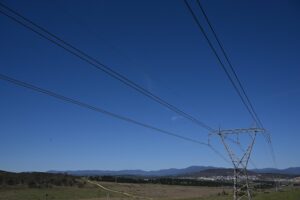Simon Hackett, the executive chairman of Australian battery storage developer Redflow, declares himself to be the number one fan of Tesla electric vehicles in Australia. But he insists that Redflow’s battery storage product is better than the Tesla Powerwall.
Redflow threw down the gauntlet to its much-hyped international rival on Wednesday, announcing the release of the ZCell battery storage product, bigger and more expensive than Tesla and other big name products, but one Hackett expects to be a force in the market.
“As Tesla’s biggest fan in Australia I’ve got a view that they’ve got the best battery technology for cars, but we do a better technology for houses and that’s totally cool,” says Hackett, who has bought Tesla Roadsters and several Model S electric vehicles, has orders in for the Model X and will also be head of the queue for the new “mass market” Model 3.
“I expect Tesla to sell a hell of a lot of Powerwalls and the nice thing is that we have a market here that is going to explode, it’s not a matter of them having to lose for us to win or vice versa and you can appreciate as well we make a battery that’s a lot more grunt, a lot more capacity,” Hackett told RenewEconomy in an interview.
Hackett expects the market for battery storage in Australia to be “huge”. This, he says, will be driven by Australia’s high grid prices, its big rates of rooftop solar installation, a desire for more grid “independence”, and a wish to do something for the environment.
“I’m seeing the same set of signals from human beings that I saw at the start of the internet boom,” says Hackett, who made his fortune with his company.
“The batteries have gone from something that people that use to talk about in dark corridors to something that is a dinner table conversation in households.
“Tesla are the catalyst here, not the cause. The cause is that the conditions are right, batteries are … starting to approach the cost where we can have these conversations.
“It’s a tipping point in my view , you can see it a year ago you couldn’t have this discussion with a random person about batteries, now every second person I talk to engages me about it.”
Redflow on Wednesday announced pricing details and specifications for its households battery storage system that it has dubbed the ZCell. The 10kWh battery storage system will be installed for between $A17,500 and $A19,500 a system. Redflow says that is competitive, on delivered energy and capacity, than its rivals.
On a back of an envelope calculation, if a household had the product for 10 years, and discharged it fully once a day, that translates into delivered cost of energy in the mid 40c/kWh. A lot for most households – although some, including low energy users, are being hit for that much because of high grid costs.
Hackett says initially the battery storage costs doesn’t matter so much. The market will be driven at this stage by early adopters, people who simply want to be part of it. Then, as costs come down, and they surely will – just like solar in the past decade – it will become a mass market product.
Hackett says the driver for battery storage is the same that inspired people to buy the Prius hybrid vehicle.
“There’s an inclusion point where people felt like they wanted to buy a car that was more part of the solution, and not part of the problem,” Hackett said.
“If you feel that the world is heading to a bad place in various ways, global warming etc, a battery in your house in the future won’t fix it. But for a lot of people I think its makes them feel that they’re becoming apart of the solution rather than continuing to contribute to the problem.
“If you’ve got a power station on your roof that you can keep energy in one of our batteries and you can charge your EV when you come home, now you’ve genuinely done something . You’ve actually created solar power transport.
“The combination of a solar battery on your house and mobile battery in your car lets humans make their transport fuel on their roof. Now that’s actually new.”
Hackett is not a supporter of the idea of going off-grid, although he admits people will do that because then can, and some will want to. For most, however, the grid will act as the cheapest form of back-up. It’s just a question of pricing that service.
“The question to ask is generally how often are people prepared to be without power, and often the answer is “I’m prepared to be without power”. If you’re in a metropolitan area and you don’t want to be the only house without power, then you need to stay on the grid or have some kind of back up generator.
“I think were getting into an era where there are pretty cool back up generators are turning up, like gas fuel cells. But the point is that you need to be budgeting for that if you want uninterrupted power, or you need to treat the grid like a leased gen-set.
“I agree that the grid operators don’t need to price themselves out of existence, but my strong view is that 5 years from now the smart ones will have realised they want battery storage operated to send power back when the grid needs it.
“We just have to get through this valley in the middle where the perception is that they’re anti battery.”
Hackett, however, describes the idea of “vehicle-to-grid” – using EVs to power up the house as a “bit of a furphy”.
That’s because he believes that the cost of battery storage will fall to such an extent that it will no longer be a question of having battery A or Battery B, but having both.
So why buy a flow battery?
Hackett says: It’s bigger, it’s better suited to a heavy workload than lithium-ion batteries, it doesn’t need active cooling, and it’s local. “It’s designed in Australia for Australian conditions,” he says.
To read more about the Redflow ZCell battery launch, read our story on our sister site One Step Off The Grid.









